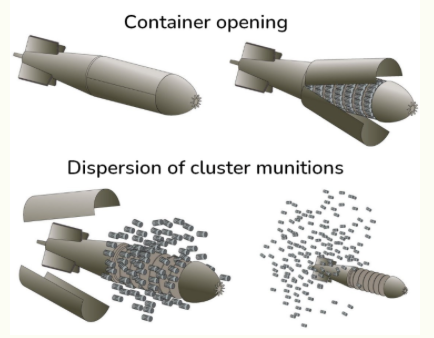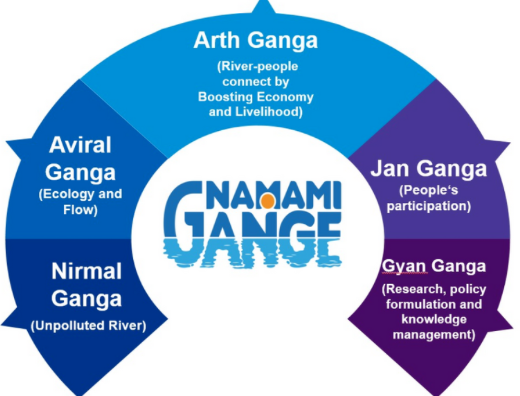Daily Current Affairs | March 8 2025 |
Important Topics from Current Affairs : 1) Convention on Cluster Munitions 2) Strategic Bitcoin Reserve by USA 3) Namami Gange Programme Achievements 4) International Women’s Day
Jumbo IAS
3/8/20254 min read
1) Convention on Cluster Munitions
On 6 March 2025, Lithuania’s withdrawal from the Convention on Cluster Munitions (CCM) officially took effect.
This marks an unprecedented decision in the history of the Convention, raising concerns about the humanitarian impact and the integrity of international norms prohibiting cluster munitions.


About the Convention
It is an international treaty of more than 100 states(112 ratified + 12 signed. but not ratified)
It prohibits all use, transfer, production, and stockpiling of cluster munitions.
India, USA, Russia, Israel, Ukraine, China not members.
Adopted in 2008, the treaty entered into force on 1 August 2010.
Cluster Munitions are bombs that release smaller bomblets(submunitions) increasing range of damage.
Threat of Cluster Munitions
High Civilian Casualties - Cluster munitions are designed to disperse many small bomblets over a wide area, making them particularly dangerous in populated areas or where civilians and military targets are intermixed.
High Failure Rates - A significant percentage of submunitions fail to detonate as intended, leaving behind unexploded ordnance (UXO) that poses a long-term threat to civilians and hinders post-conflict recovery.
Socio-economic Impact - The presence of UXO can restrict access to land, resources, and economic opportunities, further hindering post-conflict recovery and development.
2) Strategic Bitcoin Reserve by USA
United States President Donald Trump has signed an executive order, which establishes a Strategic Bitcoin Reserve and a stockpile of other digital assets.
The reserve will be capitalised with bitcoin owned by the Department of Treasury that was forfeited as part of criminal or civil asset forfeiture proceedings.
Other agencies will evaluate their legal authority to transfer any bitcoin owned by them to the Strategic Bitcoin Reserve.


About this Reserve
A government backed reserve of Bitcoin and other digital assets, managed by US Dept of Treasury.
The government will hold Bitcoin as a long-term asset, preventing premature sell-offs that could destabilise markets.
Apart from Bitcoin, other cryptocurrencies like Ethereum, XRP, Solana, and Cardano will also be part of the reserve.
It will be equivalent to US Gold Reserve in Fort Knox.
What are Strategic Reserves ?
A strategic reserve is a stockpile of vital resources kept by governments or large organisations to provide a safety net during hard times.
Examples -
US Strategic Petroleum Reserve, which helps ensure a regular supply of oil during crises.
FOREX reserves to maintain currency stability & facilitate trade.
Critical Minerals Reserves.
Benefits of Strategic Crypto Reserves :
Can manipulate prices of crypt currencies;
Diversification of assets in reserves for financial stability;
Legitimise crypto markets, stabilising price volatility in them
3) Namami Gange Programme Achievements
The Namami Gange Programme, launched by the Government of India in 2014, has marked significant progress in its mission to rejuvenate the sacred River Ganga.
The programme, backed by a financial outlay of Rs. 42,500 crore, is designed as a long-term investment.
Implemented by Ministry of Jal Shakti under National Mission for Clean Ganga (NMCG).


Achievements
Among the Top 10 World Restoration Flagship Initiatives under the UN Decade on Ecosystem Restoration in December 2022.
International Water Association has honored the NMCG as a Climate Smart Utility, underscoring India’s commitment to sustainable water management.
Significant expansion of sewage treatment capacity.
Key Features of Namami Gange
Sewage Treatment Plants - Over 200 sewage treatment projects have been launched to prevent wastewater from polluting the Ganga.
Riverfront Development - Modernisation of ghats and crematoriums along the river to enhance sanitation and tourism.
Biodiversity - Efforts to restore aquatic life, leading to a rise in Gangetic Dolphin population & improved fish species diversity.
Afforestation - Over 1.34 lakh hectares of trees planted along the Ganga to prevent soil erosion and maintain water flow.
Ganga Gram Initiative - Development of 1,674 villages along the river with better sanitation, waste management, and clean drinking water.
4) International Women’s Day
On International Women’s Day on March 8, National Commission for Women has launched 21 pre-marital communication centres across nine states to provide counselling and guidance on marriage-related issues.
International Women's Day (IWD) is celebrated on 8 March, commemorating women's fight for equality and liberation along with the women's rights movement.


About this Day
In 1917, Russian women held a strike on March 8 for "bread and peace" during World War I.
Vladimir Lenin declared March 8 as International Women's Day in 1922 to honour the women's role in the 1917 Russian Revolution.
Purple, green and white are the colors of International Women's Day.
Purple signifies justice and dignity; Green symbolises hope; and White represents purity.
The theme for this year is “Accelerate Action”.
National Commission for Women
The National Commission for Women (NCW) is an autonomous statutory body established to protect and promote women’s rights in India.
It was formed in January 31, 1992, under the Ministry of Women and Child Development.
Functions :
Monitors implementation of gender-sensitive laws like POCSO, Domestic Violence Act, and Dowry Prohibition Act.
Investigates complaints related to women’s rights violations.
Takes suo moto action in cases of women’s rights violations.
Reviews government programs and legal safeguards for effective implementation.
Organises awareness programs, legal aid camps, and counselling services.


